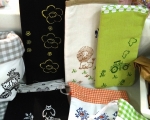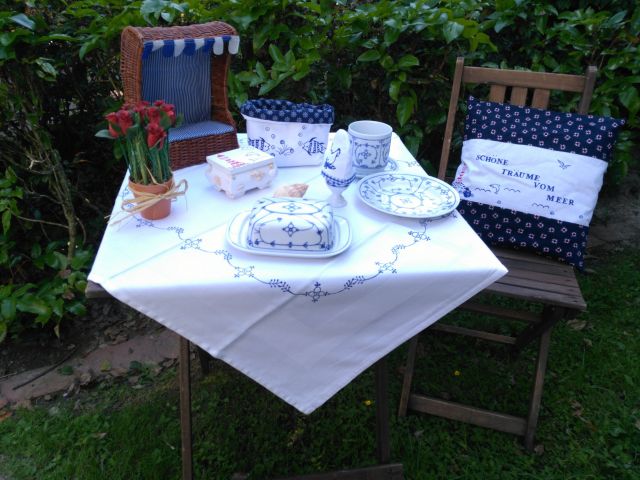Indigo blue dyeing
The art of indigo blue dyeing – a blue wonder in our region
When someone hears the common German expression blaumachen (literally: making blue), which means to skip school or work for a day, hardly anyone thinks of the traditional handcraft technique to which the idiom can be traced– indigo blue dyeing. In the past, wool out of the dyeing vats was air-dried on “Blue Monday,” enabling it to develop its blue color through a chemical reaction. The journeyman dyers then had to wait an entire day for the drying and had nothing to do.
The so-called "indigo blue dyeing" is a traditional dyeing process with a long history. The art of indigo blue dyeing was very popular for a long time, but is only practiced by a few today. The beginnings of this traditional dyeing method go back to the 17th century. The procedure and the tools have hardly changed since then. The characteristic patterns are produced using hand-crafted wooden blocks, some of which are centuries old. The imprint of a protective compound applied with the blocks ensures that the fabric is not dyed in these places, leaving a white pattern on the indigo-dyed cloth.
Anyone who is interested in this traditional craft should definitely visit the historic market in Bad Essen, which celebrates life as it was 100 years ago on one weekend a year.
Silvia Prüßner blue dyed cloths
This old, established dyeing process is practiced all year round by Silvia Prüßner in Bad Oeynhausen. She encountered indigo blue dyeing in 2011, and has since then been passionately dyeing antique, modern, and festive motifs on various fabrics. She also regularly offers exciting workshops in which she passes on her craft. At the moment you can also find her every Saturday at the weekly market in Vlotho. More information is available ion her WEBSITE.
In 2016, indigo blue dyeing was included in the nationwide UNESCO list of intangible cultural assets. Since 2018, the traditional handicraft has even been listed on the international UNESCO list.


